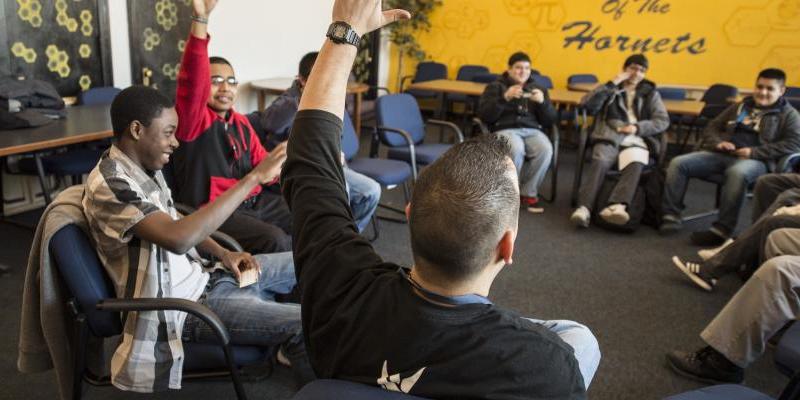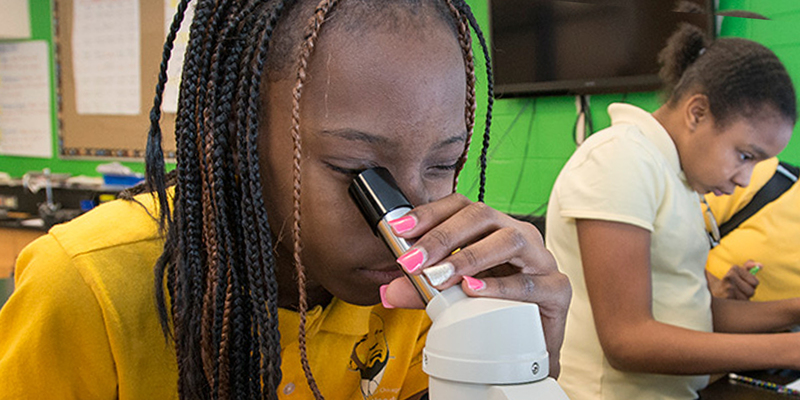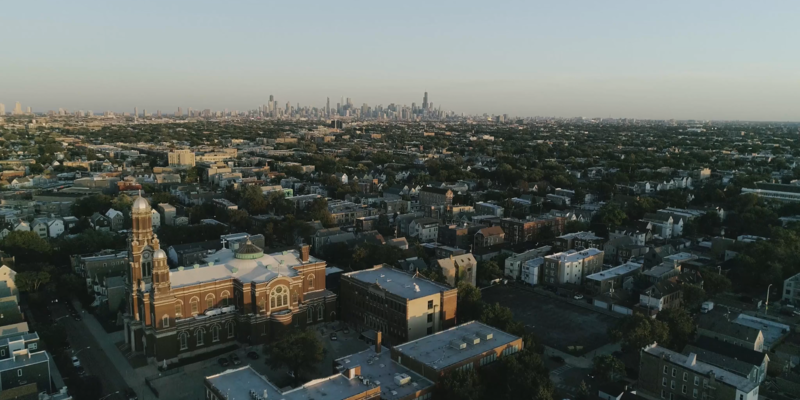Crime Lab UChicago Crime Lab Releases 2016 Gun Violence Report
Crime Lab / January 17, 2017
A report from the University of Chicago Crime Lab released Tuesday examines Chicago’s increase in gun violence last year and considers what made 2016 such a violent year. The goal of the report, according to Jens Ludwig, “is to help the city better understand exactly what happened with the hopes of avoiding another year in the future like the one that just passed.” Ludwig is the McCormick Foundation Professor of Social Service Administration, Law and Public Policy at the University of Chicago and Director of the Crime Lab.
A total of 764 people were murdered in 2016 in Chicago, 279 more than in 2015. By way of comparison, there were 335 people murdered total in 2016 in New York City, which has a population nearly three times ours. The 58 percent increase in homicides from 2015 to 2016, together with the increase the previous year, has helped undo about two-thirds of the reduction in homicides that Chicago has experienced since the peak of the crack cocaine epidemic in the early 1990s.
The report, which was also cited by the U.S. Department of Justice’s final report on its investigation into the Chicago Police Department released last Friday, notes that the increases in crime from 2015 to 2016 were much larger for gun crimes than for those not committed with firearms. Most of this gun violence stemmed from altercations that happened in public places and turned into tragedies because a gun was ready at hand.
“What we are experiencing in Chicago is not a complete breakdown of social order so much as a dramatic increase in some combination of people’s willingness to take guns into public places and their willingness to use them against others,” said Roseanna Ander, Executive Director of the Crime Lab.
The Crime Lab’s report also examined the geography of the increase in shootings. Gun violence in Chicago has typically been disproportionately concentrated in a number of very disadvantaged South and West side neighborhoods. In principle the large increase in gun violence the city experienced in 2016 could have arisen from a diffusion of the most severe aspects of the gun violence problem into new areas. Instead, said Max Kapustin, Research Director at the Crime Lab, “what seems to have happened is an intensification of gun violence in those neighborhoods where the problem was already most pronounced.” Just five neighborhoods accounted for nearly half of the increase in gun violence in the city as a whole.
One of the most striking features of the increase in gun violence is how sudden it was: As late as December 2015, there was no indication that gun violence was on the verge of rising sharply. Indeed, homicide rates in December 2015 were if anything down relative to the previous December. But beginning in January 2016, homicides and non-fatal shootings surged high above their 2015 levels and stayed higher for almost every month thereafter. To date there are no signs in the available data that the increased rate of gun violence in Chicago is abating.
“The suddenness of the increase in gun violence that we saw at the end of 2015 helps rule out many candidate explanations for why there are so many more shootings now in Chicago,” said Ludwig. “Most of the candidate explanations written about by the news media – things like lax gun laws in nearby states, how local courts handle gun cases, or social conditions in the city like poverty and racial segregation – can’t really explain what we saw in 2016 because these factors did not change abruptly at the end of 2015.” Nor did factors like the weather or available measures of social spending change by enough to be able to explain why shootings surged so much at the beginning of 2016.
The most controversial explanation for why gun violence rates increased so much is changes at the Chicago Police Department. Despite strong claims made by both sides in the political debate, the Crime Lab report notes that there is no evidentiary basis to draw clear conclusions one way or the other at this point. On the one hand, one of the few changes that fits the timing of the increase in gun violence is a large drop in the number of street stops carried out by the Chicago PD, which declined by about 80% between November 2015 and January 2016. On the other hand, several years ago New York City experienced a similarly large decline in street stops without any increase in gun violence. For the decline in street stops to explain why gun violence increased in Chicago, we would also need some explanation for why that type of change would have such different impacts across cities – which remains poorly understood at present.
“Not knowing exactly what caused the increase does not mean that we can’t find solutions and begin working immediately to make Chicago safer,” said Ander. “Only 25 years ago, Chicago and New York City had nearly identical homicide rates. New York’s has plummeted by almost 90% since then, all while the city has simultaneously reduced its incarceration rate. We too can reverse this trend, and we must if we want the city of Chicago to thrive. We are starting to slowly understand how to address the violence problem, but to make large changes in the problem in our hometown will require an investment of resources much larger than is widely appreciated.”
While the report focuses mostly on trying to understand what happened in Chicago and why, the Crime Lab will continue to partner with policymakers, the civic community, and local nonprofits to identify promising approaches for moving forward. Since 2008, the University of Chicago Crime Lab has worked with cities to identify and test the most effective and humane ways to control crime and violence, and reduce the harms associated with the administration of criminal justice. The Crime Lab works to have social impact at scale by doing the most rigorous research possible in close collaboration with city government in both Chicago and New York City.
Such solutions will be discussed by Ludwig, Chicago Urban League President Shari Runner, and Chicago Police Department Chief of Patrol Fred Waller at an upcoming panel discussion hosted by the City Club of Chicago on January 26th. The Crime Lab and other civic leaders will also share promising strategies for reducing violence in Chicago in a series of op eds that will be forthcoming in the Chicago Sun Times.
# # # # #





